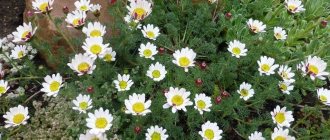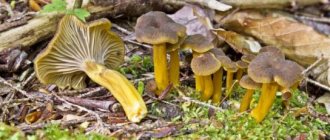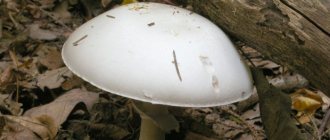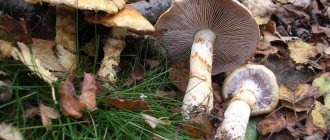About the features of cultivation
All primroses have a special development cycle.
During the period when all nature is reborn after winter and begins to actively vegetate, they have already experienced the most active phase of their life. This occurs in April-May depending on the type of plant and variety. Primroses are always planted in open ground in the fall from September to November in order to admire their flowering in early spring. Places chosen are open, drained, and sunny. Suitable areas are between stones, under trees that do not yet have leaves in the spring and the area is completely open to the sun.
Bulbs or plots of perennials are planted with the condition that in the summer their above-ground part will either be completely absent or lose its decorative effect. That is, you need to plant them in groups near summer ornamental plants and shrubs.
In the garden, an interesting option is to plant bulbs in the lawn. In a few years they will grow and will delight the eye with entire flowering meadows.
Primroses are not only beautiful plants, but also very easy to care for. They do not require watering or any agrotechnical measures. It is enough just to feed them 1-2 times a year and plant them if necessary.
Primroses (video)
Since in nature the marsh violet grows in swampy wetlands, in the garden it will also have to choose a place with similar conditions. It is planted near streams, ponds and artificial swamps.
Primroses are true harbingers of spring. There are many types of early flowering plants, and all of them can become a real decoration for your garden!
Ultra early bulbous
There is still snow, but from under its cover the first messengers of spring - snowdrops - are beginning to break through, and in their place, one after another, other flowering bushes will delight us with bright colors.
Snowdrops
Snowdrops are the first to awaken from hibernation. Their white bell flowers appear as early as March, as soon as the snow melts. The botanical name of the plant is galanthus. Propagated by daughter bulbs or seeds. Prefers growing conditions close to natural. Terry varieties of snowdrops look especially impressive in the garden.
Groups of galanthus are planted under bushes, trees, and in partial shade, so that in summer the bulbs in the ground do not dry out in the scorching sun.
Next comes the turn of other bulbous early-blooming flowers:
- crocuses:
- hyacinths;
- muscari;
- scillas;
- erantis.
Crocuses
This is one of the most numerous groups of spring flowers in terms of color. They come in yellow, blue, purple, pink, and also have a two-color color. There are natural forms and hybrid ones, bred in Holland and having large flowers. Most often, the unpretentious crocus Tommasini and Anchira are grown in garden plots. The plant grows quickly, as it forms numerous children after flowering.
Crocuses, like hyacinths and tulips, are great for early forcing in containers. To do this, in November they are planted in a light substrate with a high sand content. By March the crocuses will bloom. For a spectacular appearance, plant 5-10 bulbs in a container.
Hyacinths
The bushes have not only an aesthetic appearance, but also a bright aroma, especially for Dutch varieties. In total, over the 5-century history of cultivation, more than 300 varieties of this plant have been bred. It is planted both in groups and individually on alpine hills or in combination with crocuses and tulips.
Muscari
The most unpretentious and bright primroses appear in the garden. Depending on the variety, they bloom from April to May. They bloom for about 1.5 weeks, after which the above-ground part dries out. Muscari are planted in groups to create the effect of a flowering carpet. The predominant colors of the inflorescences are white, blue, and purple.
Scilla
A low-growing plant with small flowers fits in. The botanical name is scylla. The Siberian scilla has bright blue flowers and is widely represented in the gardens of the middle zone. Extremely unpretentious and ideal for a garden landscape designed in a natural style. All the plant needs is moist, light soil during the flowering period. When planting a blueberry in the garden, you need to be prepared to restrain its active growth.
Erantis
This plant is also included in the list of ultra-early bulbous plants. It blooms in April with bright yellow flowers with a diameter of only 2-2.5 cm, and does not lose its decorative effect even during snowfalls. The plant reaches a height of 10 cm. It must be planted in groups; in single plantings it does not look impressive.
The list of early flowers for the garden can be supplemented with such representatives as irises (reticulated), daffodils, and hazel grouse. The latter are the most numerous and are represented by both dwarf species, similar to snowdrops, and large ones, reaching a height of 80-90 cm.
Daffodils
Representatives of the family are no less numerous in terms of varietal diversity. On the market you can find ultra-early bulbs and late ones that bloom in May. The most graceful among daffodils are:
- Ice King (double creamy white flowers with a diameter of 12-13 cm);
- Pink Champagne (white-pink crown flowers);
- Spelbinder (lemon trumpet flowers that change color to white in the center).
Delicate irises
Iris reticulum is a dwarf representative of irises. The botanical name is iridodictium. It reaches a height of 10 cm, so I plant it in groups on alpine hills or among the lawn.
Most bulbs do not need to be dug up. They can grow in one place for at least 5 years. The exception is plants that grow quickly and require more space. This also applies to tulips, which go deeper into the earth every year, causing the flowers to become smaller or not appear at all.
Tulips
The brightest and most long-awaited symbol of spring is the tulip. The plant is found both wild in fields and meadows, and cultivated. There are hundreds of developed varieties and hybrids. They differ in the size and color of the bulb, the height of the plant, the diameter and color of the flower, the timing of planting and flowering.
Tulip flowers can be goblet-shaped, oval, or cup-shaped. Petals can be simple, terry, or fringed. There are varieties that form several buds on one plant.
The earliest varieties of tulips that bloom at the end of March:
- Duke Van Tol (height 20 cm, flowers red-orange, yellow or pink, simple goblet-shaped);
- Monte Carlo (yellow, terry, 20 cm high);
- Abba (dwarf, scarlet, only 10 cm in height).
There are many more varieties of tulips that bloom from mid-April to the end of May. They are distinguished by a high stem up to 40-50 cm, a variety of shapes and colors of inflorescences. For abundant flowering they need moisture and nutritious soil. The more organic components it contains, the larger and brighter the flower will be, and the bulb will produce more children.
Tulips are grown in open ground and in containers. Bulbs are planted in the ground in October-November, depending on the region and weather. The soil temperature should not be higher than +10°C. The bulb must have time to take root before the onset of persistent frosts, but not develop the green above-ground part.
If the plant is used for container planting, the bulbs are planted in November and left in the cellar or other cool, dark room until January.
Plantings are watered 1-2 times per month to prevent the soil from completely drying out. In spring, tulips are fed 2 times with nitrogen and mineral fertilizers until flowering.
When the plant fades and the stem turns yellow, the bulbs are dug up, dried and stored in a ventilated area until autumn planting. Tulips differ from other early-blooming bulbs in that they are ideal for cutting and making bouquets.
April spring flowers
In April, the first spring flowers bloom in the garden. This is a time of unique and vibrant cultures, so we suggest considering the most popular representatives.
Delicate violets
The fragrant violet with its blue-blue flowers joyfully greets the warm rays of the sun. To get such a beauty in your flowerbed, you need to sow the seeds in prepared soil, and then place the plants in a dark room.
Delicate violets
After a month, you can start picking crops and then transplanting them to a permanent location. There is no need to dig it up for the winter; just cover it with spruce branches.
Amazing Dream Grass
Dream-grass is a magical culture with which quite a lot of legends and mysterious beliefs are associated. But, despite this mysticism, the plant is very popular in gardens and flower beds. It blooms in the second half of April, delighting with its presentable appearance.
Magic Dream Grass
To propagate Dream-grass, use the seed method, since digging up the plant in the forest is strictly prohibited. It is listed in the Red Book. But the seed method is an excellent solution for obtaining such a crop on your site
Exquisite Hellebore
Hellebore is a rhizomatous perennial that has evergreen leaves. Its flowering begins in April and can last until May. The flowers are painted in white, yellowish or burgundy shades; peach and dark red tones are also suitable.
Photo of Hellebore
It is best to plant crops in semi-shaded areas. Watering should be moderate, avoiding stagnation of melt water. For propagation, give preference to the division method rather than seeds.
Iridodictium (or Snowdrop Iris)
This early representative of the flora blooms immediately after the disappearance of the first snow. This is usually the end of March, but extends until mid-April. The height of mini-irises is up to 10 centimeters. The shade of the petals can be blue, blue, violet, purple or orange.
Early spring flower from the Iris family - Iridodictium
Thanks to the bizarre and variegated pattern on the petals, the flowers stand out for their unusualness among other representatives of the flowerbed. Iridodictums are often planted on the lawn, usually in groups, which creates an original decoration of green grass.
Tulips
When describing the first spring flowers, one cannot fail to mention these well-known flowers - Tulips. There is rarely a garden or summer cottage where these amazing plants do not grow.
Although greenhouse Tulips can be found in flower shops by March 8, under natural conditions they bloom in April. Gardeners decorate various flower beds and flower beds with them, plant them along garden paths, and often plant them in all kinds of containers and pots.
Herbaceous early flowering perennials
Perennials are very convenient to grow, as they do not take much time and are usually less demanding than annuals. For several years in a row they occupy a permanent place in the garden, grow and delight with their decorative properties. Knowing the exact timing of flowering of plants, it is possible to form so-called gardens of continuous flowering, highly decorative throughout the warm season of the year.
Spring primrose
Primrose is the most numerous early perennial in terms of varietal characteristics. The first green leaves of the plant appear in March, and blooms from April to May. Primrose bushes are compact, from 8 to 20 cm in height. The inflorescences are simple or double white, yellow, burgundy. Propagated by dividing the bush and seeds. Can be grown in open ground and containers.
Among the variety of varieties, there are representatives with flowers similar to muscari, they are called muscariodes. There are so-called candelabra primroses, the peduncles of which are very tall, and the inflorescences are arranged in a circle in a ring.
The varieties are highly decorative:
- high primrose (Alba, Colossea, Rosea);
- primula serrata (with ball-shaped inflorescences of blue or purple color);
- large-cupped primrose (with yellow flowers of heterogeneous color, has medicinal properties).
Primulas are divided into early-blooming, mid-blooming and late-blooming, and some species bloom twice per season - in early spring and late summer.
Hellebore Caucasian
Hellebore - differs from other early-flowering plants in that it is planted in the garden in early spring, as soon as the soil thaws a little. Its greenery remains decorative all season due to its dense and tough green leaves. The plant is frost-resistant, strong and highly decorative. It blooms starting from February in warm regions, and from April in cold regions. Hybrid varieties are used in the garden, which are distinguished by the variety of flower colors and their diameter. Hellebores can be white, purple, yellow and pink.
Anemone long-haired
Anemone is a delicate and unpretentious flower, popularly called Anemone. It blooms in April with white, pink, pale purple flowers on tall stems. There are both simple and hybrid forms with double flowers. It grows quickly due to its creeping rhizome; most often its growth must be restrained. After the plant fades, the greenery of the bush remains decorative until the beginning of winter. In the long and warm autumn, the anemone blooms again.
Terry marsh marigold
Marigold is a resident of humid and swampy regions. In the garden it is used to decorate ponds. It is a compact bush with bright yellow flowers. Hybrids have double flowers.
Early and mid-blooming primroses include daisies, forget-me-nots, periwinkle, leotard and dicentra, whose flowers look like a broken heart. All of them are unpretentious and perfectly adapted to the climatic conditions of the middle zone.
How to use in landscape design
Primroses are a real find for those involved in landscape design. There are several ways to use them.
- Planting near shrubs and trees.
- Placement among perennials in a flower bed.
In the first case, primroses will grow well, since shrubs and trees will reliably protect them from various adverse weather conditions. In the second, you will be able to achieve continuous flowering. After the primroses fade, they will be replaced by perennials.
If you prefer primrose, its various varieties look great in a group.
Important! Since blooming primrose can cause an allergic reaction, you need to wear gloves when working with it.
Primulas, characterized by early flowering, look impressive when planted with other spring plants. Among the neighbors that will suit her:
Levcoyum is often planted in ridges or mixborders, which will not take much time to create with your own hands. Low plant varieties look great in rock gardens and rock gardens. For a rustic style, the presented primrose is just perfect. Flower beds with jaundice look great near paths. It is recommended to combine the flower with herbaceous perennials and brightly colored annuals.
Kashubian buttercup will be an excellent option for flower beds and ridges. It is better to place the obscure lungwort in groups in a mixborder. Shrubs, uvularia, kupena, hostas, ferns and corydalis will be excellent neighbors for it. The plant looks ideal in ridges and borders.
Open lumbago, or sleep-grass, is not so common in landscape design. It is difficult to care for, and many gardeners do not risk planting the plant. But if you take a chance, the lumbago will become a real decoration of the site. The flowering is very beautiful, the fluffy fruits also look very touching.
Rare exotics
In temperate climates, adapted varieties of tropical plants do well. One of them is Ornithogalum - a bulbous relative of hyacinth. The second name of the plant is Poultry Plant.
Ornithogalum umbellata
The following types of this primrose winter well and are easy to care for:
- umbrella (narrow thin leaves, white flowers, forms a lush green bush, blooms in April-May);
- drooping (height 40 cm, narrow leaves, tall peduncles, spike inflorescence strewn with small white bells);
- balance (winter-hardy dwarf species 15 cm high with large white flowers, blooms in May).
Sanguinaria terry
Sanguinaria canadensis is a miniature flower that blooms as soon as the snow melts. Flowering is long - about 3-4 weeks. The flowers look like tiny water lilies. This is a member of the poppy family, native to North America.
The plant is shade-tolerant, frost-resistant, unpretentious. It is not affected by diseases and pests and reproduces in plots. In the garden it is planted under trees and shrubs and quickly grows to entire clearings.
Kandyk Siberian
Kandyk is a rare bulbous plant from the lily family, similar in appearance to cyclamen. It blooms in April, and both flowers and leaves with brown spots are decorative. Forms dense bushes 30-40 cm high. The peduncles are tall, on which drooping flowers with bent petals of white, pink, purple and other shades are located. A winter-hardy and unpretentious plant, native to the northern regions.
Early flowers for the garden have one main advantage - they are highly anticipated when they bloom. They are the ones who symbolize the arrival of the long-awaited spring, even if there is still snow in the yard and the frost gets stronger at night.











